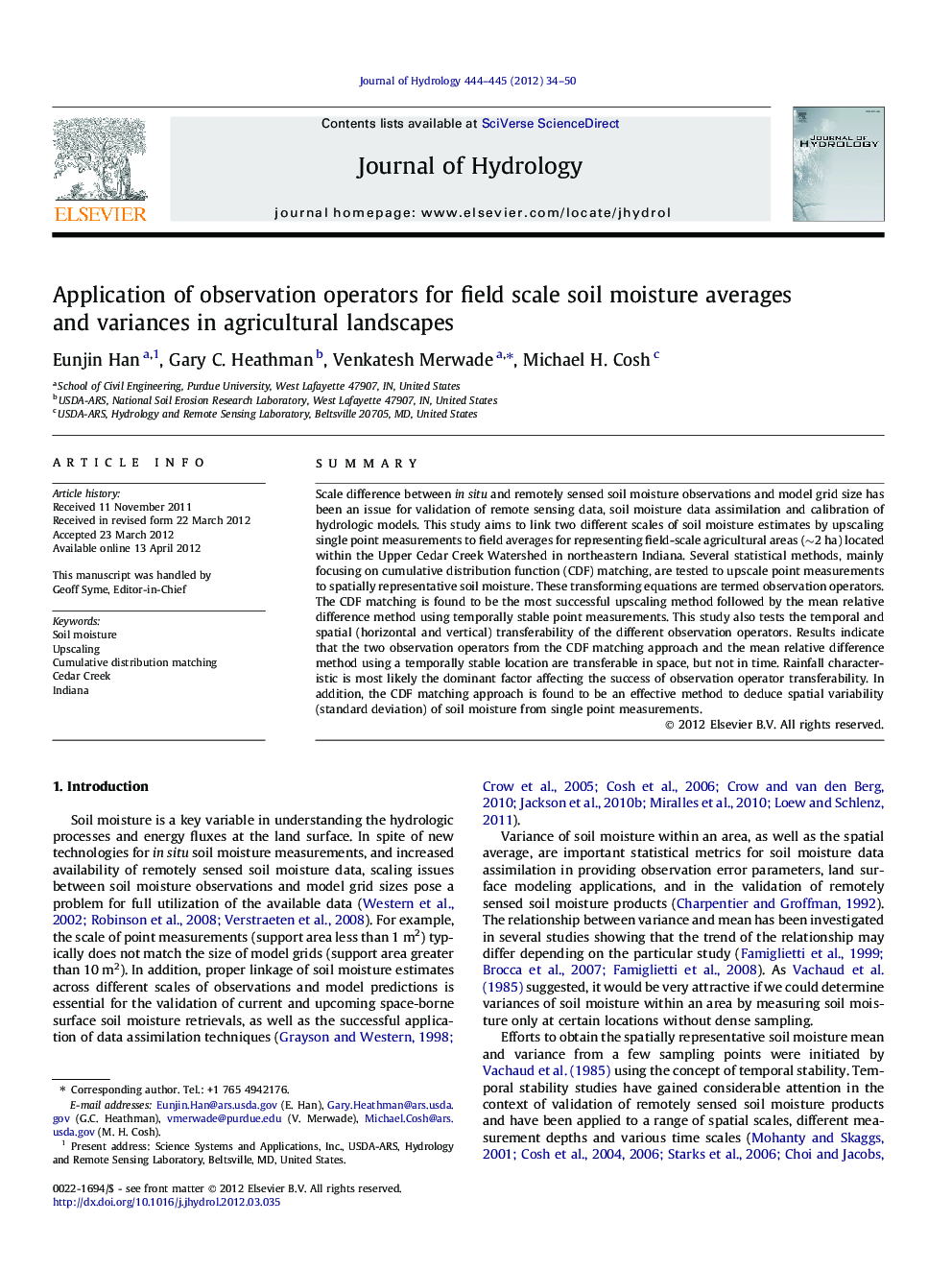| Article ID | Journal | Published Year | Pages | File Type |
|---|---|---|---|---|
| 4576913 | Journal of Hydrology | 2012 | 17 Pages |
SummaryScale difference between in situ and remotely sensed soil moisture observations and model grid size has been an issue for validation of remote sensing data, soil moisture data assimilation and calibration of hydrologic models. This study aims to link two different scales of soil moisture estimates by upscaling single point measurements to field averages for representing field-scale agricultural areas (∼2 ha) located within the Upper Cedar Creek Watershed in northeastern Indiana. Several statistical methods, mainly focusing on cumulative distribution function (CDF) matching, are tested to upscale point measurements to spatially representative soil moisture. These transforming equations are termed observation operators. The CDF matching is found to be the most successful upscaling method followed by the mean relative difference method using temporally stable point measurements. This study also tests the temporal and spatial (horizontal and vertical) transferability of the different observation operators. Results indicate that the two observation operators from the CDF matching approach and the mean relative difference method using a temporally stable location are transferable in space, but not in time. Rainfall characteristic is most likely the dominant factor affecting the success of observation operator transferability. In addition, the CDF matching approach is found to be an effective method to deduce spatial variability (standard deviation) of soil moisture from single point measurements.
► Single point soil moisture measurements are upscaled to field averages. ► CDF matching method provides successful upscaling results. ► The upscaling method is transferable spatially and vertically, but not temporally. ► Soil moisture variance can be also estimated from point measurements.
